Darksiders 2 Review
Posted by
with_teeth26
on
The original Darksiders was a bare-bones port on the PC, but it was still functional and fairly unique on the platform as an action-adventure game. Its sequel is in the same boat; it still lacks graphics options beyond resolution, and has the visual fidelity of the console version with no apparent enhancements unless you wish to delve into your graphics card’s control panel. The default controls are awkward and the key-rebind menu is hidden in a strange and unintuitive place. On the flip side, the game runs well on relatively modest hardware, and the controls are responsive and work well with the PC thanks to the higher frame rates and ability to use hotkeys for special attacks. It might be a straight port in most regards, but in a side-by-side comparison it’s still probably the best version of the game.
2010’s Darksiders saw one of the four horsemen of the Apocalypse ride to earth pre-maturely and doom mankind. You spent the game trying to clear your name as it was under false pretences that this extreme act was made, and must resolve the resulting conflict between heaven and hell. In the sequel, you play as Death as he attempts to redeem his brother’s name by restoring humanity. To do this, you come to a planet populated by the ‘Makers,’ which is also home to the tree of life. The Makers are struggling against a mysterious form of corruption that has disabled the tree and harmed them. From here you will visit a large variety of locations and try to please some strange people in order to achieve your goal.
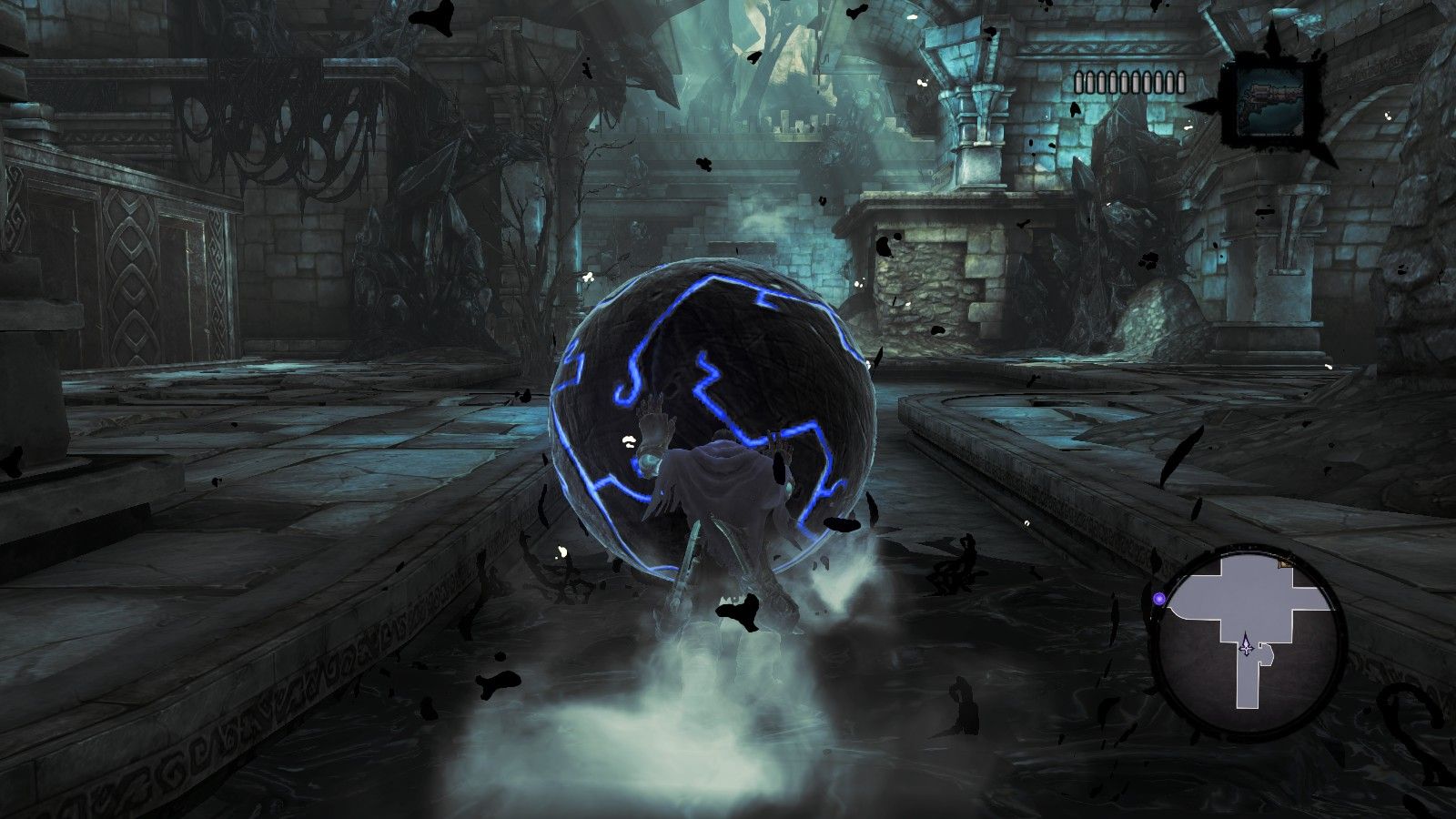
Many early puzzles involve pushing balls into slots
While the quality of the story is comparable to that of the first game, with some exciting high points and cliché lows, the storytelling has seen a significant increase in quality. There are some incredibly stylish and entertaining animated cut scenes throughout the game, with other in-engine cut scenes also moving the story along. The quality of the voice acting is high, and the writing isn’t too bad if not a bit reliant on fantasy tropes. When you stop playing and start up the game after a break, a sentence about the story so far will be read to you while the game briefly loads. This improved storytelling makes it much easier to become invested in Death’s quest and helps draw you in to the intriguing world full of biblical mythology and tormented souls.
While War’s quest was fairly linear, Darksiders II is structured more like an RPG, with hubs where you can practice fighting, talk to people and trade. You will then ride from these hubs to the quest locations on your horse Despair where you will usually work your way through one of the many lengthy and varied dungeons.
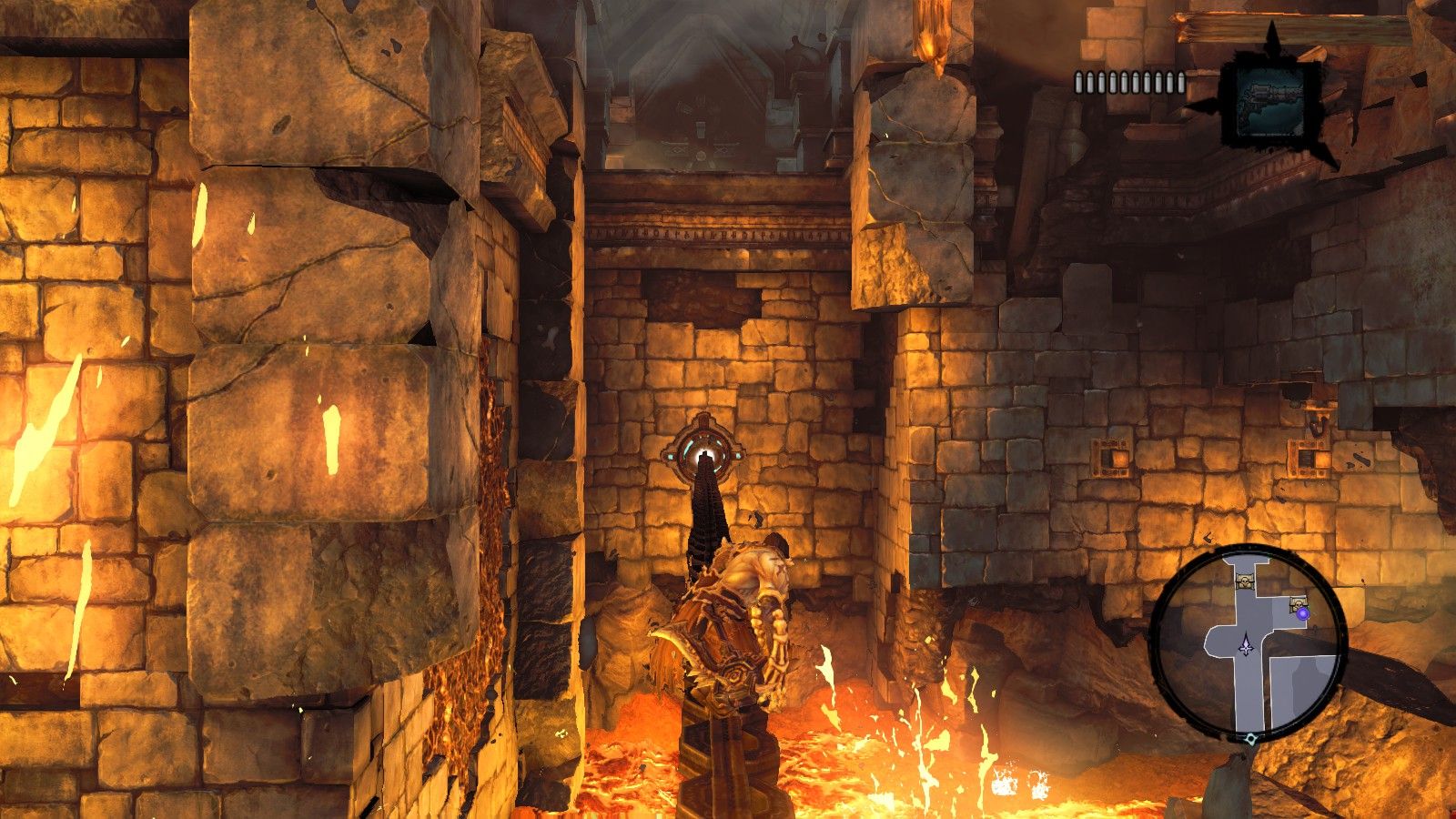
Death’s agility makes up for his questionable fashion choices
There isn’t a huge amount of freedom in Darksiders II’s world, but a new loot and economy system provide incentive for exploration. Loot chests and collectables are often hidden in places that require some platforming or puzzle solving, and since both of these elements are so well executed you will find yourself going after these chests and items even if the rewards are underwhelming. You can also fast-travel to locations you have already visited, and it is clear the game wants you to do this at times as backtracking out of a dungeon is usually not possible. While the open areas between dungeons provide the illusion of freedom, Darksiders II for all intents and purposes a linear game, albeit one packed to the gills with quality content.
Once you get to one of the dungeons, your time will be spent between platforming, combat and puzzles, with the three elements often being combined in interesting ways. While the first Darksiders had all of these elements, none of them were really all that compelling on their own. Darksiders II improves on this largely thanks to the great agility of Death, who moves quicker and jumps farther than his lumbering brother. The addition of some light role playing elements, which I will get to later, also help spice things up.
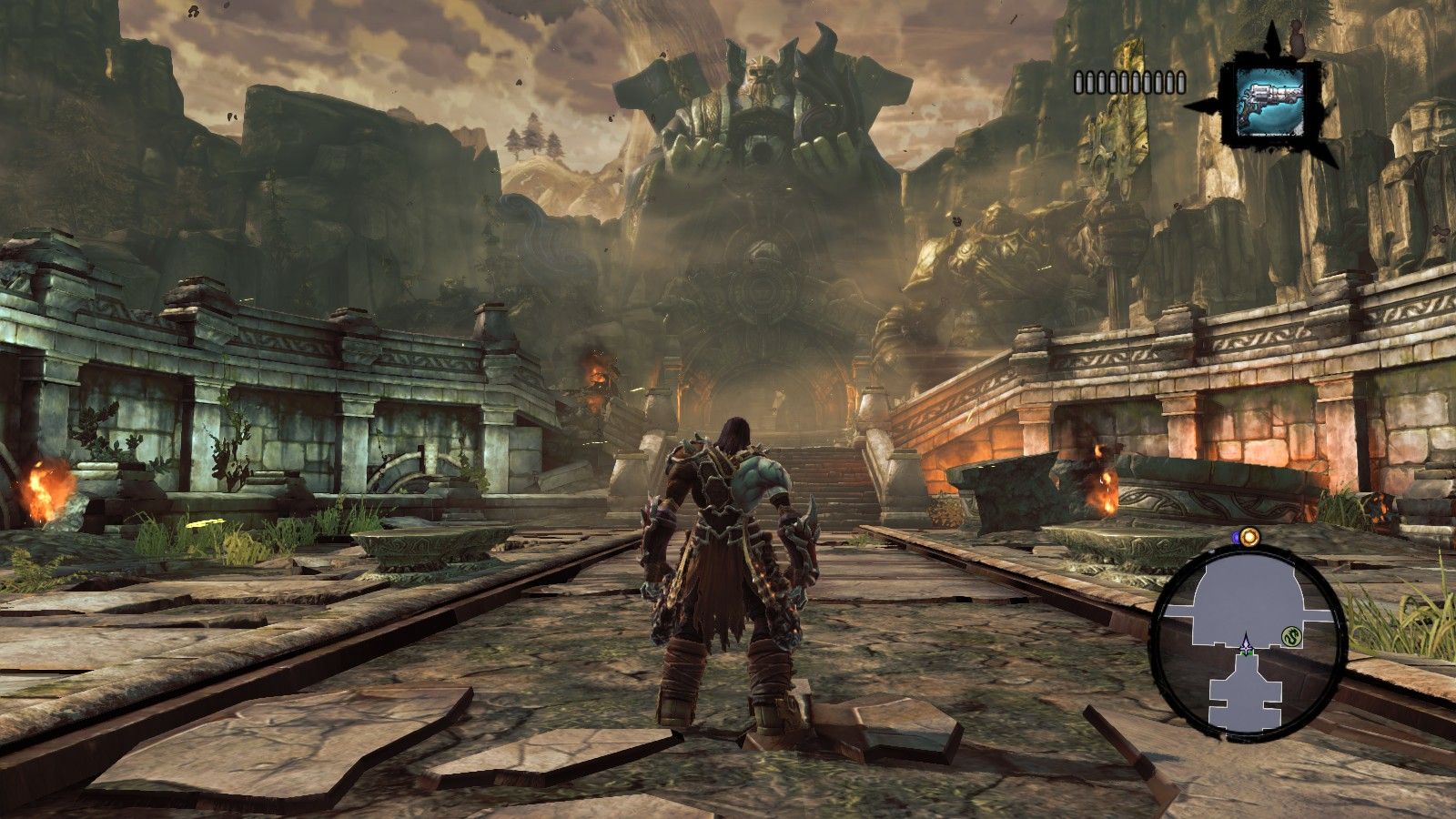
Stunning backdrops make up for a lack of visual fidelity
The platforming might seem a bit clunky at first, and you might get frustrated early on when you don’t know which surfaces and objects Death can grab on to. Fortunately once you learn the ropes the platforming is fluid and very fun with some very memorable sequences. If you fall in to one of the game’s many bottomless pits, you will be reset at the beginning of that platforming segment. This is fortunate, since you might fall not because you mis-timed a jump, but because the camera decided to look in an unhelpful direction, forcing you to make leaps of faith just so you can see where to go next. I also had problems with the camera breaking after cut scenes where it would be locked in place where the cut scene ended while I could still control Death. Fortunately these issues are fairly uncommon and don’t do too much to detract from the otherwise very enjoyable platforming segments.
While many of the platforming sequences are highly enjoyable on their own, they are often combined with puzzles. At the start of the game the puzzles are mostly straightforward and involve rolling big stone spheres into slots which activate a bridge or door. As you progress however the puzzles become more and more complicated, with multiple elements being used and some creative thinking required to get through the more tricky ones. Later on, Death gains the ability to split into multiple versions of himself, and you must switch between them to solve puzzles later in the game. Towards the end, you once again will use portals, although the developers must realize they are being a bit obvious with their idea borrowing based on the achievement name when you gain this ability.
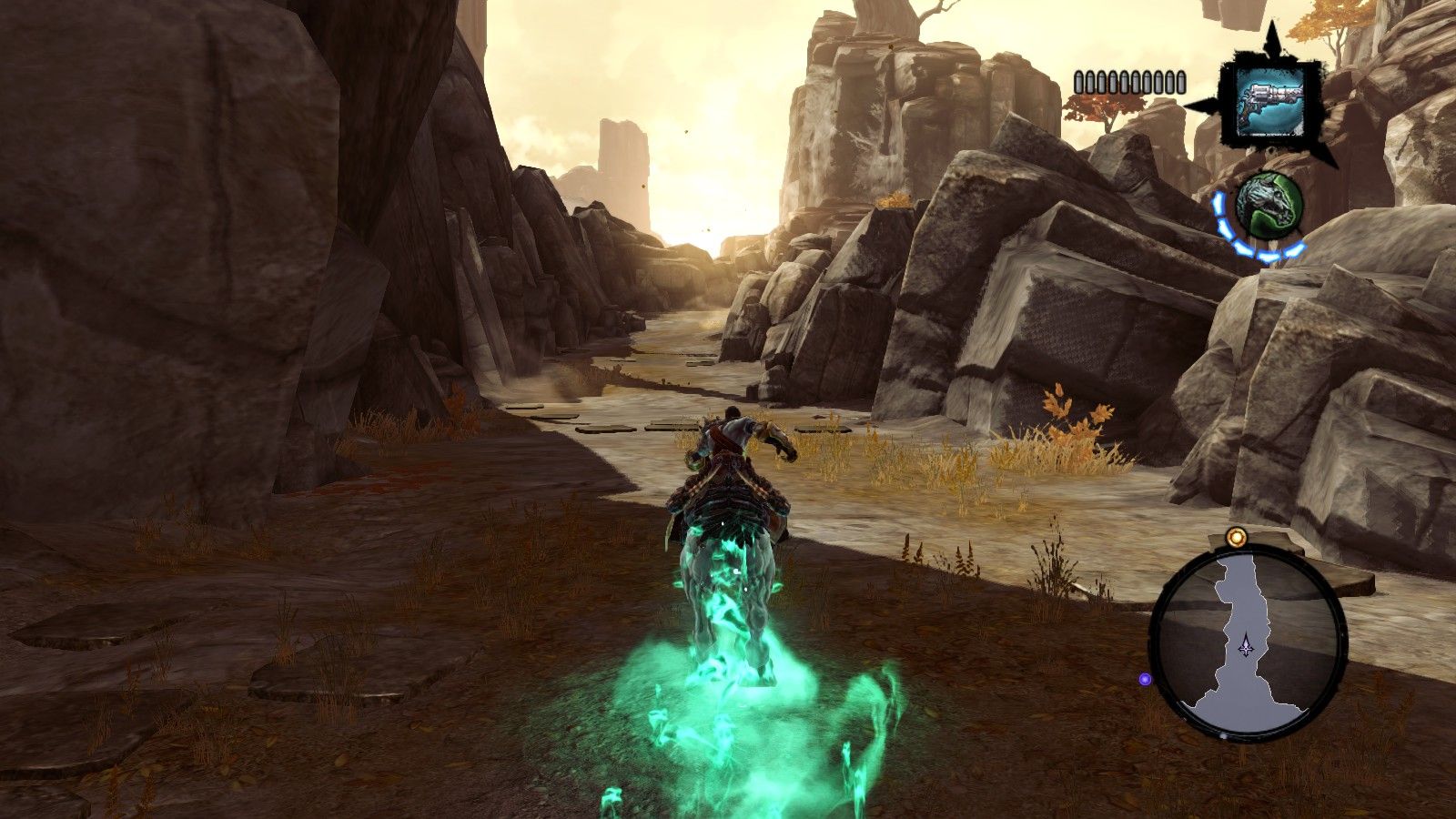
Despair will help shuttle you from dungeon to dungeon
Just when you have had enough of puzzles and platforming, the game usually throws a bunch of enemies your way. The combat in Darksiders II is likely the most improved element, as Death is a much faster, more agile character than War. You will make liberal use of your ability to dodge, going in for a few quick slashes before rolling out of the way of the attacks of your enemies. You wield scythes as your primary weapon, and can choose between a variety of secondary weapons. Some of these are slow but deal lots of damage and can knock over groups of enemies, while others allow you to attack with great speed and dodge away to safety. On top of this you will carry a sidearm, although here your choice is limited to a pistol which lets you chip away at enemies from a distance, or a grappling hook that lets you pull small enemies towards you, or you pull yourself onto larger foes.
The enemy variety is decent enough, with a good mix of small, big, fast and slow-attacking baddies which keep the combat scenarios interesting. Many levels are peppered with bosses, both big and small, and these vary in quality significantly. The better bosses usually require the use of Death’s special abilities and some light puzzle solving to beat, with some of these fights being exciting and really enjoyable. Other fights, including sadly the final boss, simply involve dodging attacks and dealing damage when you can get close enough. Sadly a few of the boss fights are hampered with camera issues. The game has a tendency to force you to look forward, so some boss fights that require you to aim up and sideways can be unnecessarily frustrating, especially when you need to be moving and looking off to the side at the same time. Fortunately these problematic boss fights are few and far between.
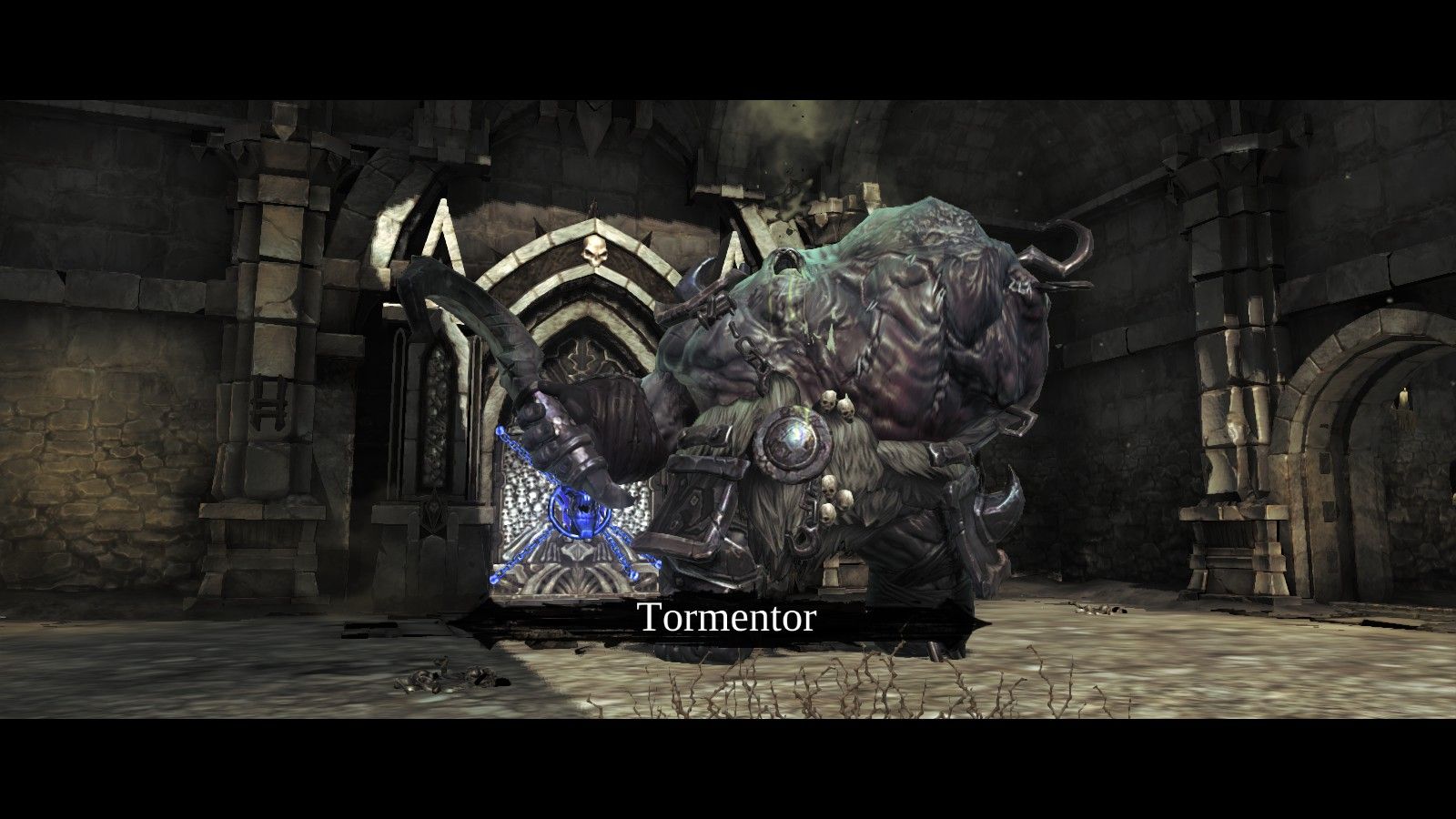
Some bosses such as this sunny fellow are essentially damage sponges
Whenever you attack an enemy you accumulate Wrath. Wrath is spent on special attacks, and you are given a bit of choice as to what these attacks are. As you play the game you level up Death, increasing his health and strength, but also allowing you to spend skill points on ability trees. There are two main trees, one with offensive powers such as a teleport-slash or a powerful spinning attack. You can upgrade these attacks to give Death more wrath, health, or to deal more damage. Alternatively, you can put points into a tree which lets you summon minions who will attack enemies and distract them from Death. You can pull up a radial menu to choose one of these attacks, although on the PC you can assign each attack to a hotkey, improving the fluidity of the combat even further.
The Diablo-esque loot system also helps make Darksiders II feel even more like an RPG. Some enemies will drop loot, and you will find loot-chests scattered around the world, often hidden in places that require a bit of platforming to get to. The game lets you easily compare the stats of dropped loot with current weapons and armour, and often you must choose between weapons and armour that increase Death’s damage, or bolster his defenses. You might come across a rare possessed weapon; these can be upgraded by sacrificing lesser weapons, making them even more powerful. You will also find money throughout your travels which you can use to spend on weapons or potions from traders located in the hubs mentioned earlier. On your first playthrough you stop levelling up at 20, but the new game+ option lets you continue past this, creating decent incentive to play through the game a second time.
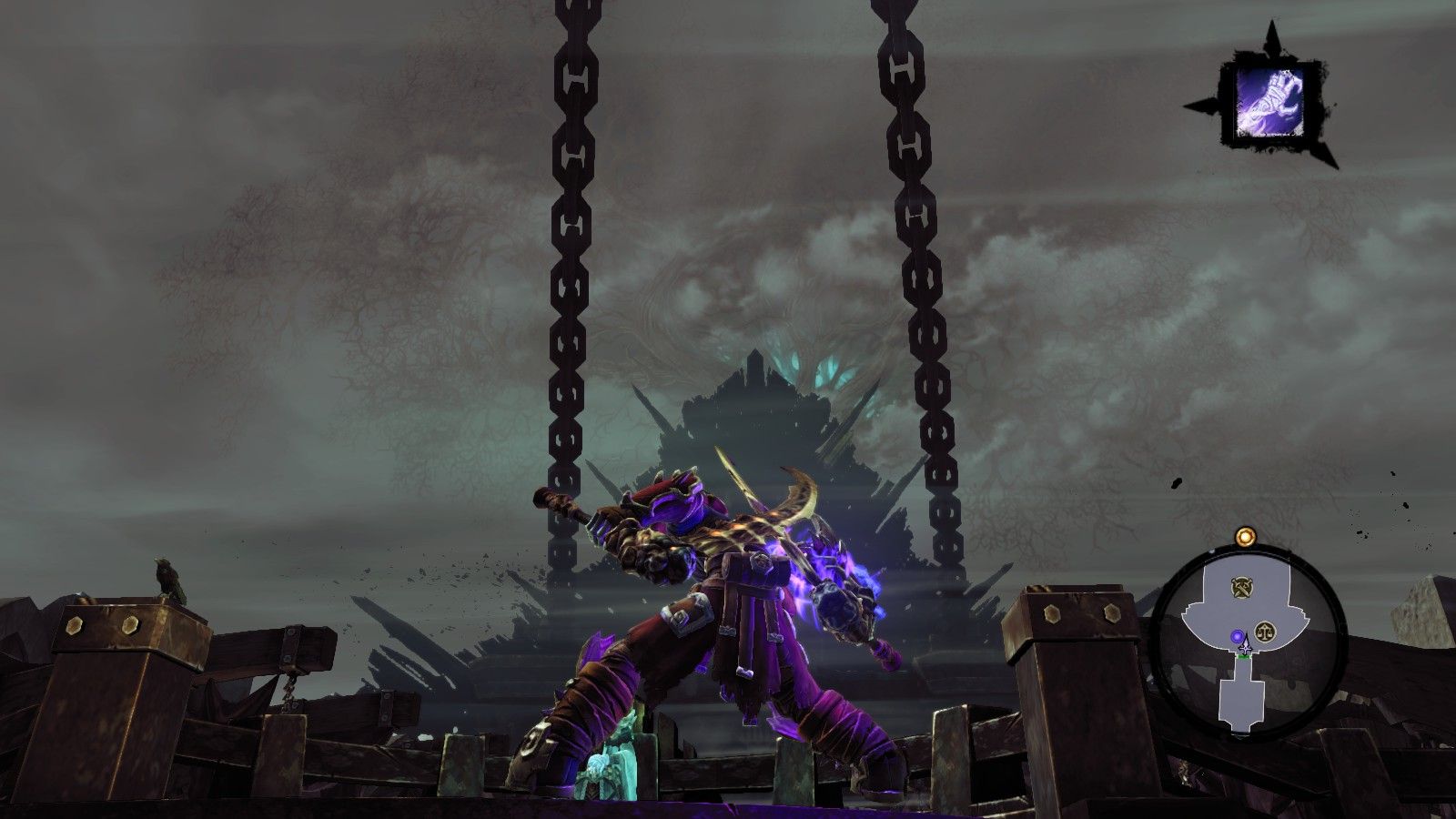
If Darksiders II is anything to go by, you should definitely fear the Reaper
The main story mode in Darksiders II is very substantial, with a quick run that avoids most optional content likely taking in excess of 15 hours, while a more completionist run would likely bring that number well over 20. There is a sort of non-story mode in the form of the crucible, an arena that lets you pit your character, gear intact, against increasingly difficult waves of enemies for cash rewards. This mode doesn’t add much to the game, but if you enjoy the combat you might have fun trying to get to the end, especially if you have your eye on an expensive piece of loot on offer by one of the traders.
Due to it being a straight console port, the PC version of Darksiders II lacks the visual fidelity you might expect from a modern PC game. Textures are low resolution and the entire game looks a bit fuzzy, with significant aliasing in some areas. If you have an Nvidia GPU, you can force anti-aliasing and anisotropic filtering through the control panel which does help noticeably, but I have not found a way to do this using an ATI card. Fortunately these technical shortcomings are made up for by the stunning artistic vision present throughout much of the game. Many of the levels and backdrops are really very impressive, and I found myself stopping and staring upon entering some new areas. Some character models look a bit funny, but the environments are varied and often very impressive, making it difficult to dwell on the blurry textures.
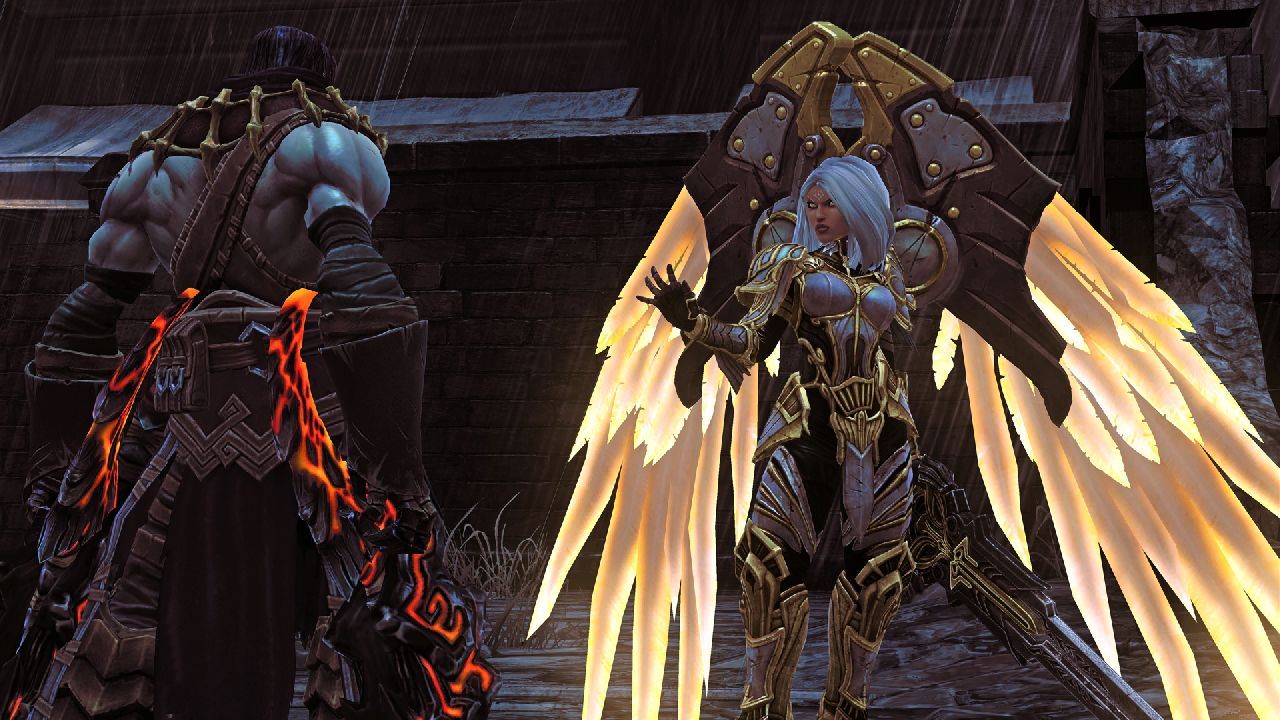
The audio in Darksiders II is also good, with weapon attacks sounding powerful, and your horse letting out tortured cries as you summon it to your side. The real high point of the audio however is the sound track, which is excellent. A great variety of tracks set the mood for the various dungeons, and when the music and the beautifully crafted environments come together, the game can be absolutely enthralling.
While it’s a shame that more attention and care wasn’t given to the PC version of Darksiders II, what is here is completely playable and of very high quality. Death’s adventure is longer, more interesting, and more varied than War’s, and this makes Darksiders II a great sequel. There are more than a few rough edges and minor niggles, and some of the dungeons feel a bit drawn out, but none of these issues detract from the game in a major way. While no one element of the game is best in class, everything is done well, and the fact that they are blended together so expertly means that any fan of action adventure, hack and slash, platforming or puzzle games owe it to themselves to check this excellent title out.
